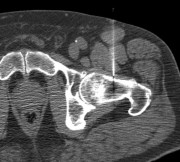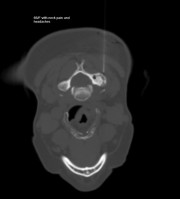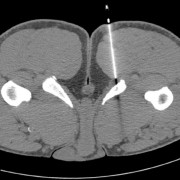
Fig. 1: Stem cell deployment into the left hip joint
Diagnostic tools and medical treatment technologies are continually evolving, and all developments have to be carefully monitored and evaluated by appropriate scientific and regulatory entities. Currently, doctors, scientists and ethicists are evaluating the role of autologous mesenchymal stem cells
for regenerative therapy and minimally-invasive pain management, and have arrived at a pivotal time as researchers translate their work to clinical applications right here in the Coachella Valley.
You may have read about regenerative medicine and stem cell therapy in the context of cell and tissue reparation or anti-aging. Now, new areas of research for minimally invasive treatment of chronic diseases and pain management are being explored right here in the desert. A clinical trial involving Cell Surgical Network and Desert Medical Imaging is evaluating the role of adult autologous mesenchymal stem cells for the treatment of joint disease, spine disease and other chronic or traumatic injuries.

Fig. 2: Needle placement into the cervical spine facet joint (neck area)
What does this mean? Adult simply means that children are not included in the subject population. Autologous is defined as “from the same organism.” In other words, the stem cells are taken from the same subject to which they are later delivered. Mesenchymal is an embryology term which means of mesodermal origin and able to develop into cells that are capable of developing into connective tissues, bone, cartilage, blood, lymphatic and blood vessels.
This interesting new area of research is meant to assess how well patients respond to cells harvested from their own bodies; each subject is their own donor, so there are no concerns for rejection or negative immune response.
A typical procedure Involves three steps: determining the target for injection using imaging such as MRI; harvesting of fat cells from which the stem cells are derived; and the deployment of those cells with or without imaging guidance. Harvesting of stem cells usually takes about 20-30 minutes in an outpatient surgical setting. The procedure involves the liposuction of fat from the subject with the use of local anesthetic. Processing of the fat isolates the stem cells which are subsequently deployed into the area being treated.
The deployment could be into a vein, artery, or under the skin. It could also be performed under imaging (CT or MRI) guidance into joints (Fig.1), spine (Fig. 2), or directly into organs. Images of the anatomy are acquired to guide needle placement by an expert radiologist who confirms accurate delivery of the dose to the desired area
(Fig. 3).

Fig. 3: Treatment of hamstring tendon injury with therapeutic stem cell injection
Once successfully deployed, the stem cells can change into bone, cartilage, muscle, fat, collagen, neural tissue, blood vessels, and even some organs. Research has shown that the nature and action of adult mesenchymal stem cells may positively impact pain, inflammation and infection in addition to regenerating cells and repairing tissue.
While much of this may seem very cutting-edge and sci-fi, stem cells have been evaluated for medical purposes for over 50 years. Great controversy surrounded initial stem cell research due to the origin of the stem cells from fetal samples. Fortunately, technology has brought us to the point where individuals may be their own stem cell donors for both therapeutic and regenerative purposes.
For additional information on autologous mesenchymal stem cell therapy, please call (760) 776.0040 to arrange a consultation, or www.DesertMedicalImaging.com and www.stemcellrevolution.com/about-us/our-physician-teams/elliot-b-lander-md-facs-cv.
